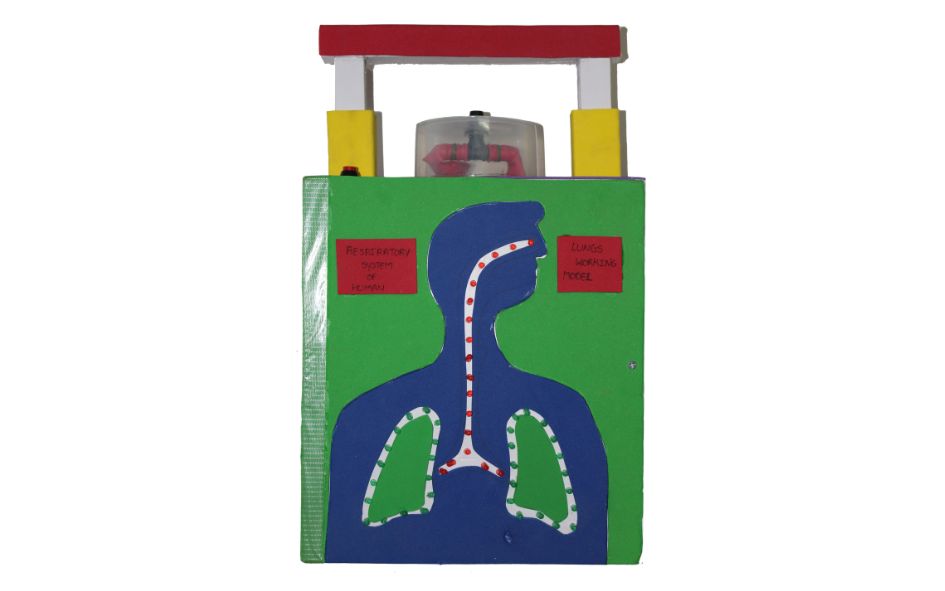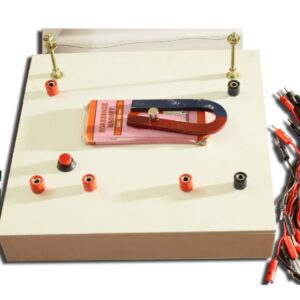PRINCIPLE OF BALL BEARING WORKING MODEL
SCIENCE LAB EQUIPMENT WORKING MODEL / SCIENCE EXHIBITION WORKING MODEL
5 in stock
Refund
Unfortunately, once an order is placed, there is no refund available. However, we do offer exchanges for defective or damaged items.
Due to the nature of our products and the potential for misuse or mishandling, we do not offer refunds. We believe in customer satisfaction and strive to provide quality exchanges for any issues that may arise.
If you have received a defective or damaged item, please contact our customer service team and they will assist you with the exchange process. Please note that exchanges are subject to availability and product conditions.
We do not offer refunds for change of mind purchases, but we do offer exchanges for valid reasons such as defects or damages.
Delivery
My Science Kart delivers orders through a reliable and efficient shipping service to ensure your products arrive safely and on time.
Yes, you can easily track your order from My Science Kart by using the tracking number provided to you once your order has been shipped.
If you have any issues with your order from My Science Kart, please contact our customer service team who will be happy to assist you and resolve any problems.
Payment
You can pay for your purchases on My Science Kart using various payment methods such as credit/debit cards, net banking, UPI’s and mobile wallets.
Yes, we use industry-standard encryption technology to protect your payment information and ensure that it is secure.
If you have any payment-related queries or issues on My Science Kart, you can contact our customer support team through the website or email us at support@mysciencekart.com.
PRINCIPLE OF BALL BEARING
The principle of ball bearings is based on reducing friction between moving parts in machinery by using small, spherical balls arranged between two surfaces. Ball bearings are widely used in various applications, from automotive engines to household appliances, where smooth rotation or movement is required. The key principles of ball bearings include:
1. **Rolling Contact**: Unlike sliding contact, where two surfaces move against each other, ball bearings utilize rolling contact. The balls inside the bearing roll between the inner and outer surfaces, reducing friction and wear.
2. **Distribution of Load**: Ball bearings distribute the load evenly across the balls, allowing for higher load capacity and smoother operation compared to sliding contact mechanisms.
3. **Reduction of Friction**: By rolling instead of sliding, ball bearings significantly reduce friction between moving parts. This reduces energy consumption, heat generation, and wear, leading to longer-lasting and more efficient machinery.
4. **Ball Retainer**: In many ball bearings, a ball retainer or cage keeps the balls evenly spaced and prevents them from rubbing against each other. This ensures smooth rotation and prevents jamming.
5. **Materials and Lubrication**: Ball bearings are typically made from hardened steel or ceramic materials to withstand high loads and resist wear. Lubrication, such as grease or oil, further reduces friction and prevents corrosion, ensuring smooth operation and longevity.
6. **Types of Ball Bearings**: There are various types of ball bearings, including deep groove ball bearings, angular contact ball bearings, and thrust ball bearings, each designed for specific applications and load requirements.
Overall, the principle of ball bearings is to minimize friction and wear between moving parts by using rolling contact, distributing the load evenly across the balls, and employing materials and lubrication to ensure smooth operation and durability. This makes ball bearings essential components in many mechanical systems, contributing to their efficiency, reliability, and performance.
Structure of Ball Bearings:
- Outer and Inner Races:
- Ball bearings consist of two concentric rings called the outer race and the inner race. These rings have smooth, hardened surfaces to reduce friction.
- Ball Bearings:
- Between the outer and inner races are small, spherical balls made of steel or ceramic material. These balls are precisely sized and evenly spaced around the circumference of the bearing.
- Retainer or Cage:
- The balls are held in place and evenly distributed by a retainer or cage, which maintains their position relative to each other and prevents them from rubbing against each other.
Working Principle:
- Reduction of Friction:
- When an axial load is applied to the bearing, the balls rotate and roll smoothly between the inner and outer races.
- The spherical shape of the balls allows them to distribute the load evenly across their surfaces, minimizing contact area and reducing friction.
- Rolling Motion:
- Unlike sliding friction, which occurs when two surfaces rub against each other, ball bearings utilize rolling friction, where the balls roll smoothly between the races.
- This rolling motion generates much less friction and heat compared to sliding friction, resulting in smoother and more efficient operation.
- Load Distribution:
- Ball bearings distribute the load evenly across multiple points of contact between the balls and the races, preventing localized wear and reducing the risk of damage to the bearing or the surrounding machinery.
- Durability and Longevity:
- By minimizing friction and wear, ball bearings contribute to the durability and longevity of mechanical systems, reducing maintenance requirements and downtime.
Applications:
- Industrial Machinery:
- Ball bearings are widely used in industrial machinery such as motors, pumps, conveyors, and gearboxes to facilitate smooth and reliable motion.
- Automotive Industry:
- In automobiles, ball bearings are used in wheel hubs, transmissions, engines, and steering systems to reduce friction and improve efficiency.
- Aerospace and Aviation:
- Ball bearings are employed in aircraft engines, landing gear, and control systems to ensure precise and reliable operation under extreme conditions.
- Household Appliances:
- Ball bearings are found in various household appliances such as washing machines, vacuum cleaners, and ceiling fans, improving their performance and longevity.
Conclusion:
The principle of ball bearings relies on the use of small spherical balls to reduce friction and enable smooth motion between two surfaces. By utilizing rolling friction and evenly distributing loads, ball bearings play a crucial role in a wide range of mechanical systems, contributing to their efficiency, reliability, and longevity.
| Weight | 0.5 kg |
|---|---|
| Dimensions | 25 × 25 × 5 cm |
You must be logged in to post a review.
Q & A
Related Products
BASIC ELECTRIC CIRCUIT ( THREE CASES) WORKING MODEL
- ✓ 100% Quality products
RIGHT HAND RULE - 1 WORKING MODEL
- ✓ 100% Quality products
OPTICAL BENCH FOR CONVEX LENS FOR MEASURING OBJECT AND IMAGE DISTANCE WORKING MODEL
- ✓ 100% Quality products
a. NATURE OF MATERIAL AND RESISTANCE b. LENGTH OF CONDUCTOR AND RESISTANCE c. CROSS SECTION AREA AND RESISTANCE WORKING MODEL
- ✓ 100% Quality products
SEPARATING IRON FROM THE SOIL WORKING MODEL
- ✓ 100% Quality products
MULTIMETER
- ✓ 100% Quality products
HEAT, TEMPERATURE and KINETIC ENERGY WORKING MODEL
- ✓ 100% Quality products
RIGHT HAND RULE - 2 WORKING MODEL
- ✓ 100% Quality products
Product categories
- Circuits & Projects 233
- My Science Kart 665
- Raw Materials For Projects & Lab Equipments 381
- Science Exhibition 516
- Science Exhibition Projects & Working Models 344
- Biology Science Exhibition Projects & Working Models 31
- Chemistry Science Exhibition Projects & Working Models 12
- Mathematics Science Exhibition projects & Working Models 7
- Physics Science Exhibition Projects & Working Models 129
- Robotics Science Exhibition Projects & Working Models 23
- Social Science Exhibition Projects & Working Models 20
- Science Lab Equipments With Working Models 363
Cart
TRULY INDIAN EDUCATION BRAND
Over 10,000+ Happy Customers
My Science Kart
Address:- Ground floor, Lakshmi Nagar, D.No:- 40-1/1-5, PVP Mall Backside, Mogalrajapuram, Labbipet, Vijayawada, Andhra Pradesh 520010
7673977997, 0866-3543677
mysciencekart@gmail.com
Categories
MAP
© My Science Kart 2024, Designed & Developed By Synfocy Tech Solutions
















Reviews
There are no reviews yet